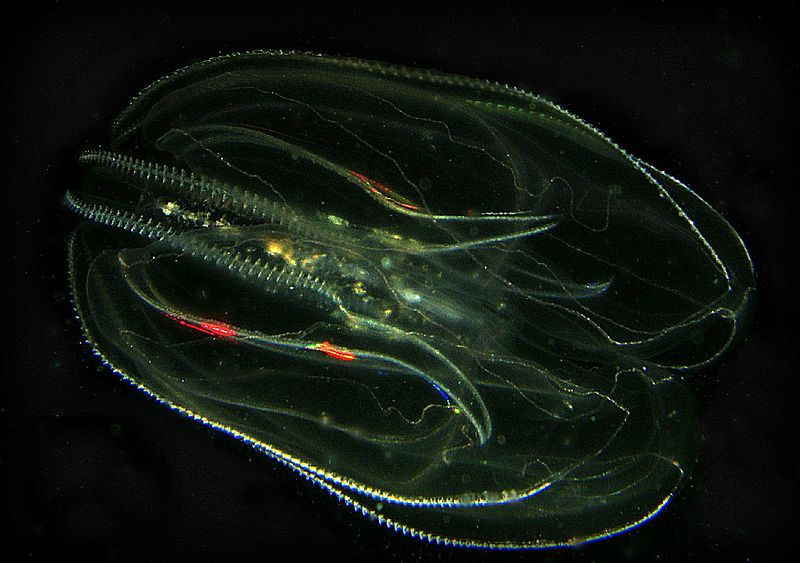
Mnemiopsis Jellyfish. Look at these guys!
These comb jellies may not look too intimidating, but they are major carnivores! They feed on zooplankton, fish eggs, and other smaller comb jellies (ewww). One major problem they cause is their categorization as an invasive species. In the 1980s, they were transported from the west atlantic to the black sea by ship’s water ballasts. This caused them to multiply too quickly, and outcompete other organisms in the ecosystem. Although they look cool, they are a real bother!
You’ve learned some pretty cool stuff about Mnemiopsis so far, right? This is some pretty cool information!
...But I know what you all really wanna know.
WHAT IS THAT COOL MULTICOLOR STUFF ALL OVER THAT JELLY/DISCO-BALL???

Sea Walnut with illuminated combs. WOW
The Mnemiopsis has a series of colored bands on their bodies made up of tiny, comb-like hairs. They all divide the body into 8 symmetrical parts, and shine magnificently when disturbed. They are iridescent, so it appears almost as if the combs change color as they move to and fro in the water. It is important to note, however, that the combs appear to shine and sparkle due to scattering light from an outside source, and not due to bioluminescence. These beautiful features do serve a practical purpose. The combs are actually used to propel the jelly through the water, similar to cilia. But its hard to marvel at the functionality of the combs when the way they look is so amazing!!!
And one final piece of info for all my loyal readers out there: The Mnemiopsis and the other comb jellies are not really that closely related to jellyfish! Jellyfish are actually in the Cnidaria phyla and Comb Jellies are in the Ctenophora phyla. Although they share gelatinous bodies, comb jellies are famous for their multicolored combs along the outside of their bodies, while jellyfish have those stinging tentacles that cause every child to fear certain scenes in Finding Nemo.
-Ian "The Rock" Dillingham
No comments:
Post a Comment